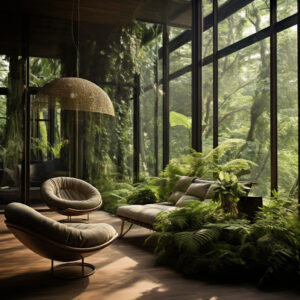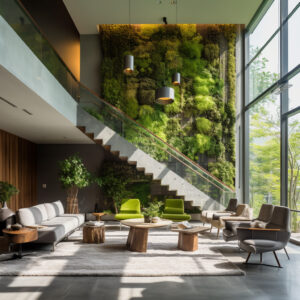Transitional Style Interiors: How to Create a Timeless Design
Introduction
Imagine walking into a room that beautifully blends the warmth of traditional design with the clean lines of contemporary style. The harmonious fusion that greets you is none other than Transitional Style—a design approach that’s been steadily captivating the hearts of homeowners and design enthusiasts alike. In the realm of interior design, achieving a balance that feels both timeless and current is no small feat. Transitional Style interiors hold the key to this equilibrium, offering spaces that are sophisticated, comfortable, and endlessly adaptable to changing trends and personal tastes. This design philosophy not only enhances the aesthetics of your home but also elevates the quality of your living experience.
Key Elements
To create a space that seamlessly embodies a Transitional Style, there are several key elements to consider. By integrating these core components thoughtfully, your interiors can exude a sense of balance and unity that stands the test of time.
- Color Palette: Neutral hues serve as a perfect backdrop in Transitional Style spaces, creating a calm and inviting atmosphere. Soft tones of beige, taupe, gray, and cream offer versatility while allowing for creative expression through contrasting textiles and accents.
- Furniture Arrangement: Furniture in Transitional Style interiors blend the sturdiness of traditional pieces with the sleek profiles of modern design. The layout should promote comfort and conversation, often featuring a mix of straight and curved lines for visual interest.
- Lighting: The right lighting can transform any room. In Transitional interiors, a layering approach is key—it combines ambient, task, and accent lighting to craft a warm and functional environment. Sophisticated fixtures such as drum shades or updated chandeliers add a contemporary touch without overwhelming the space.
-
Textiles and Accessories: Textiles like plush cushions, throws, and draperies bring warmth and texture to Transitional rooms. To complement the understated palette, patterns are typically subtle, with geometric designs or delicate botanicals being popular choices. Accessories are curated rather than abundant, focusing on quality pieces that tell a story or spark joy.
-
Flooring: The floors in Transitional Style rooms maintain a balance between traditional and modern. Hardwood floors in warm tones are a common choice, providing a classic foundation that aligns with various decor elements. To add comfort or define areas within an open space, area rugs with simple patterns or solid colors are ideal.
Tips for Transitional Style Interiors
When selecting furniture and decor for a Transitional Style interior, keep these tips in mind to ensure that your space is harmonious and functional:
- Invest in Quality Basics:
- Choose well-crafted furniture that features simple yet elegant lines. These will serve as the anchors of your room and can easily be accented with more expressive pieces over time.
- Emphasize Comfort and Practicality:
- Every piece in a Transitional space should be as comfortable as it is stylish. Upholstered seating should invite relaxation, while surfaces like coffee tables and sideboards provide practical utility.
- Balance Masculine and Feminine Touches:
- Combine straight lines and plush textiles to create a room that appeals to various tastes. For example, a robust wooden table might be paired with softer, upholstered dining chairs.
- Incorporate a Mix of Materials:
- Utilize a variety of materials—like wood, glass, metal, and fabric—to add depth and texture to your interior. This mix supports the transitional principle of bridging traditional and modern elements.
- Ensure Cohesion Through Accessories:
- While Transitional Style allows for some decorative diversity, it’s important to maintain a cohesive look through consistent finishes, like matching metals or complementary shades in artworks and ornaments.
FAQ about Transitional Style Interiors
Question 1: What defines Transitional Style interiors?
– Answer: Transitional Style interiors are all about blending the best of traditional and contemporary design to create a timeless aesthetic. They are characterized by a neutral color palette, a mixture of straight and curvy lines in furniture, practical yet sophisticated fabric choices, strategic lighting, and a curated selection of accessories.
Question 2: How can I update my traditional home to a Transitional Style?
– Answer: Start by decluttering and painting your walls in a neutral palette. Replace heavy, ornate pieces with streamlined furniture that maintains a touch of classic detail. Integrate textures through area rugs and cushions, and update your lighting fixtures to more modern, yet understated designs.
Question 3: Can Transitional Style interiors incorporate color?
– Answer: Absolutely. While the base palette is predominantly neutral, pops of color can be introduced through artwork, throws, and decorative objects. These should be cohesive and selected with a discerning eye to maintain the balanced aesthetic of Transitional design.
Question 4: Are there any materials I should avoid in Transitional Style decor?
– Answer: Transitional Style favors materials that can work well in both traditional and contemporary settings. It’s best to avoid overly rustic elements like rough-hewn wood or highly futuristic materials such as plastic. Instead, opt for timeless materials like solid hardwood, stone, or subtly patterned fabrics.
Question 5: How do trends affect Transitional Style interiors?
– Answer: While Transitional Style is inherently adaptable, it’s wise to treat trends as accents rather than primary design choices. For instance, you might integrate a current trend through accessories or smaller furnishings that can be easily switched out for new trends in the future, ensuring your space remains both up-to-date and timeless.
The essence of Transitional Style interiors is the art of striking the right balance—blending the old and new, embracing neutrality while allowing room for personalization, and prioritizing both form and function. As trends evolve and personal tastes shift, the transitional approach to design remains evergreen, providing a reliable foundation to which individual flair can be thoughtfully added. Whether you’re redesigning a single room or reimagining your entire home, keep these guiding principles in mind to create a space that celebrates sophistication, comfort, and a timeless sense of home.




